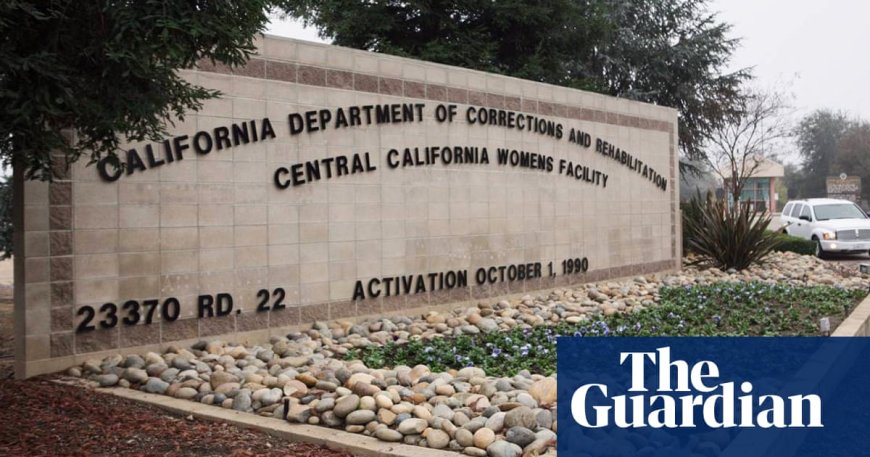DoJ opens investigation into sexual abuse at California women’s prisons

The US Justice Department Opens Civil Rights Investigation into Sexual Abuse at California’s Women’s Prisons

The US Justice Department has opened a civil rights investigation into sexual abuse by staff at California’s women’s prisons, which have for years been plagued by misconduct scandals.
Investigation into California’s Women’s Prisons
The US Justice Department announced on Wednesday that it is investigating the state’s two women’s prisons – the Central California Women’s Facility (CCWF) in Chowchilla and the California Institution for Women (CIW) in Chino. The investigation aims to evaluate whether the state protects incarcerated residents from sexual abuse by correctional employees.
Case of Gregory Rodriguez
The investigation references the case of Gregory Rodriguez, a former guard at CCWF, who is facing nearly 100 sexual abuse charges. Rodriguez is accused of repeatedly assaulting women in his custody for years.
Previous Investigation and Allegations
A Guardian investigation last year revealed that the prison received a report of Rodriguez’s abuse in 2014 but failed to take appropriate action. Rodriguez allegedly went on to commit dozens of additional sexual assaults until his retirement in 2022. Women incarcerated in California’s state prisons have filed hundreds of complaints of sexual abuse by staff in recent years.
Sustainable Development Goals (SDGs)
- Goal 5: Gender Equality
- Goal 16: Peace, Justice, and Strong Institutions
Importance of Protecting Incarcerated Women
Kristen Clarke, who leads the Justice Department’s Civil Rights Division, emphasized the importance of protecting incarcerated women from sexual abuse. She stated that every woman, including those in prison, retains basic civil and constitutional rights and should be treated with dignity and respect. The investigation will determine whether California is meeting its constitutional obligations.
Concerns and Advocacy Efforts
US Attorney Phillip Talbert acknowledged that concerns about abuse in the women’s facilities were not new. Media coverage, state audits, advocates’ efforts, and private litigation have sought to draw attention to the issue. Advocates have documented an unsafe and inaccessible reporting process, in which staff are not held accountable.
Reforms and Response
The California Department of Corrections and Rehabilitation (CDCR) has instituted reforms into its investigations of staff sexual abuse. These reforms include reviewing cases at CDCR headquarters and intensifying staff training. The department has also deployed body-worn cameras and expanded surveillance.
Legislation and Future Steps
State lawmakers have recently passed legislation authorizing the monitoring and investigation of claims of staff sexual misconduct against incarcerated people. The bill is now awaiting Governor Gavin Newsom’s approval. The CDCR welcomes the independent investigation by the US Department of Justice.
Systemic Problem and National Context
Reports have repeatedly found that sexual abuse by officers is a systemic problem in prisons across the US. The Federal Bureau of Prisons has faced its own sexual assault scandals, including at its women’s facility in California. The US Senate reported in 2022 that staff have sexually abused incarcerated people in at least two-thirds of all federal women’s prisons.
SDGs, Targets, and Indicators
1. Which SDGs are addressed or connected to the issues highlighted in the article?
- SDG 5: Gender Equality
- SDG 16: Peace, Justice, and Strong Institutions
The article discusses the sexual abuse of incarcerated women in California’s women’s prisons. This issue is connected to SDG 5, which aims to achieve gender equality and empower all women and girls. It is also connected to SDG 16, which focuses on promoting peaceful and inclusive societies for sustainable development, providing access to justice for all, and building effective, accountable, and inclusive institutions at all levels.
2. What specific targets under those SDGs can be identified based on the article’s content?
- SDG 5.2: Eliminate all forms of violence against all women and girls in the public and private spheres, including trafficking and sexual and other types of exploitation.
- SDG 16.3: Promote the rule of law at the national and international levels and ensure equal access to justice for all.
The article highlights the need to address and eliminate sexual abuse and violence against incarcerated women in California’s women’s prisons. This aligns with the targets of SDG 5.2, which aims to eliminate all forms of violence against women and girls. Additionally, the article emphasizes the importance of ensuring access to justice for the victims, which corresponds to the target of SDG 16.3.
3. Are there any indicators mentioned or implied in the article that can be used to measure progress towards the identified targets?
- Number of reported cases of sexual abuse against incarcerated women in California’s women’s prisons
- Number of investigations conducted into allegations of sexual abuse by correctional employees
- Number of staff members terminated or prosecuted for sexual misconduct
- Improvements in the reporting process for sexual abuse in women’s prisons
The article mentions the number of reported cases of sexual abuse, the ongoing investigations into allegations of sexual abuse, and the limited number of staff members terminated for sexual misconduct. These indicators can be used to measure progress towards addressing the issue of sexual abuse in women’s prisons. Additionally, improvements in the reporting process and accountability measures can also serve as indicators of progress.
4. Table: SDGs, Targets, and Indicators
| SDGs | Targets | Indicators |
|---|---|---|
| SDG 5: Gender Equality | 5.2: Eliminate all forms of violence against all women and girls in the public and private spheres, including trafficking and sexual and other types of exploitation. |
|
| SDG 16: Peace, Justice, and Strong Institutions | 16.3: Promote the rule of law at the national and international levels and ensure equal access to justice for all. |
|
Source: theguardian.com








